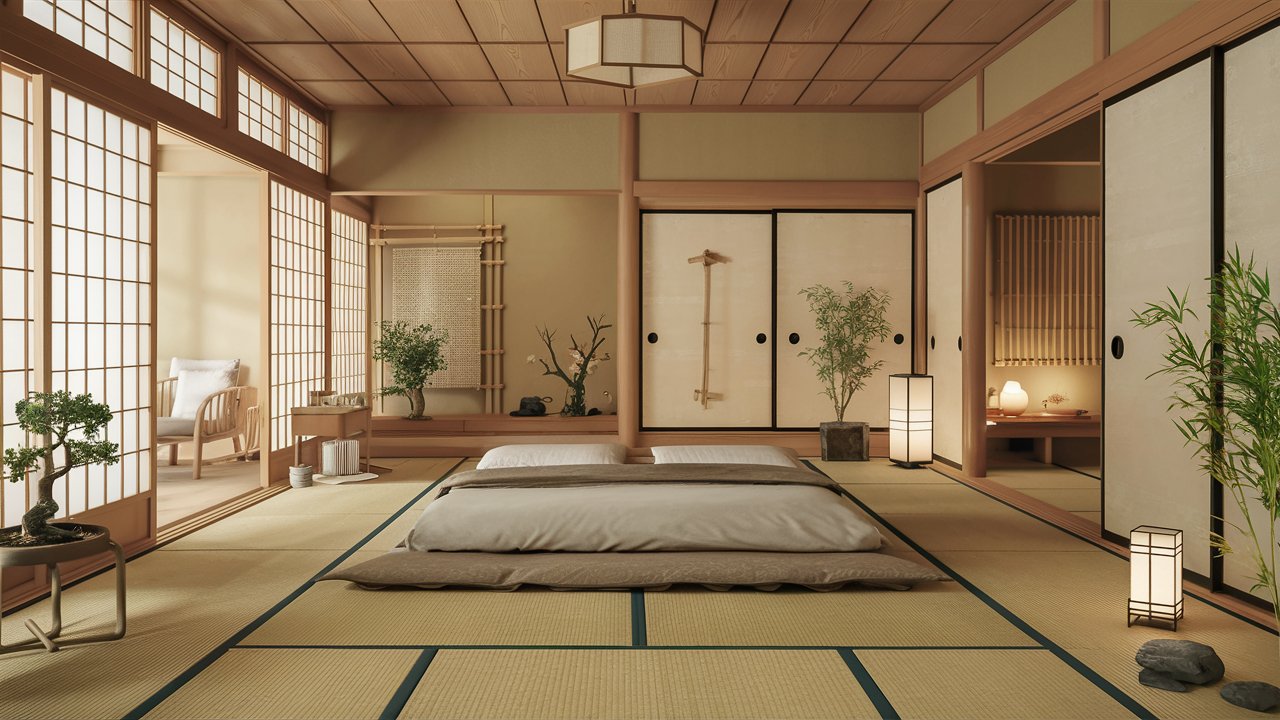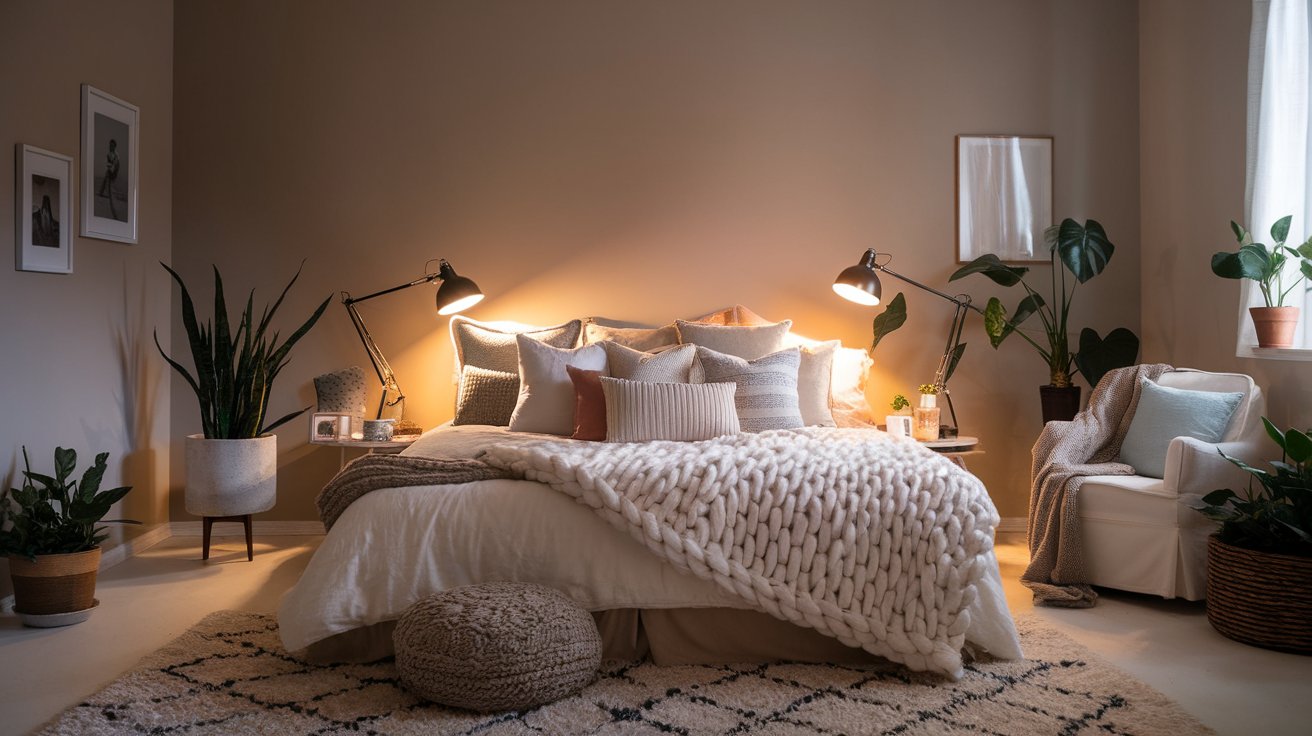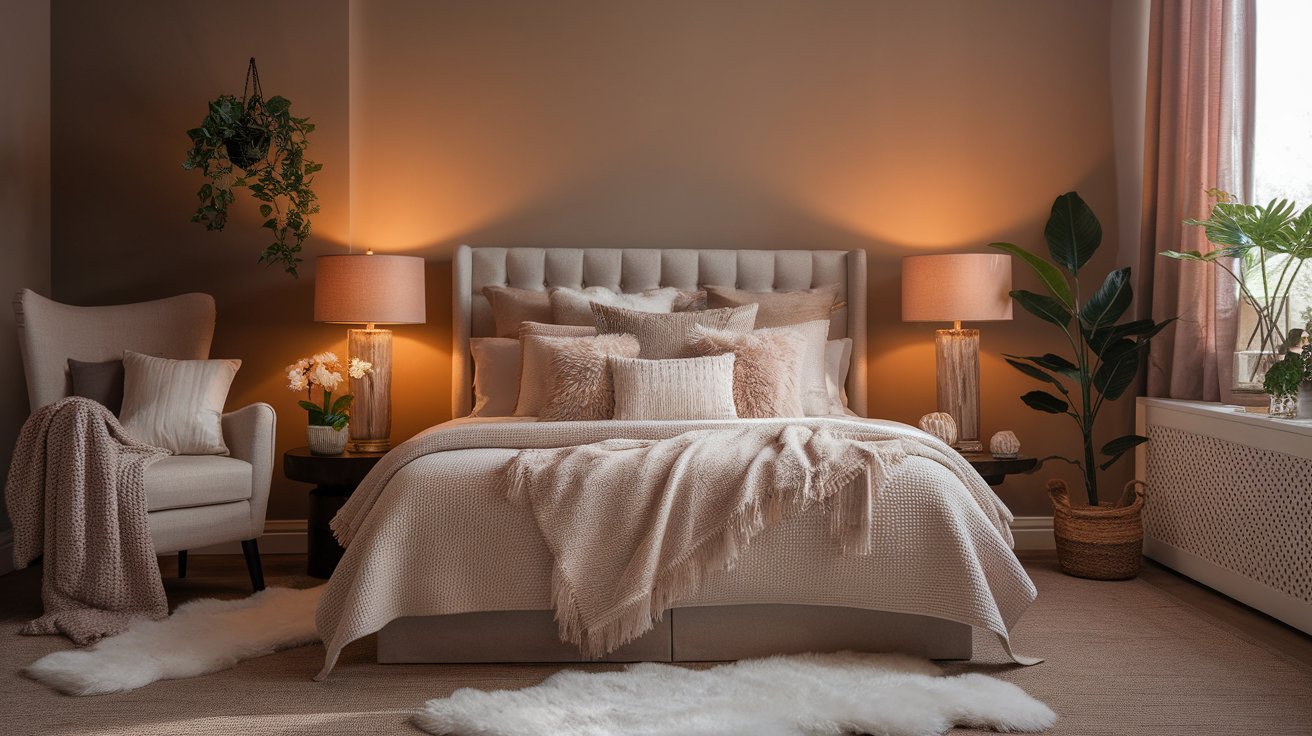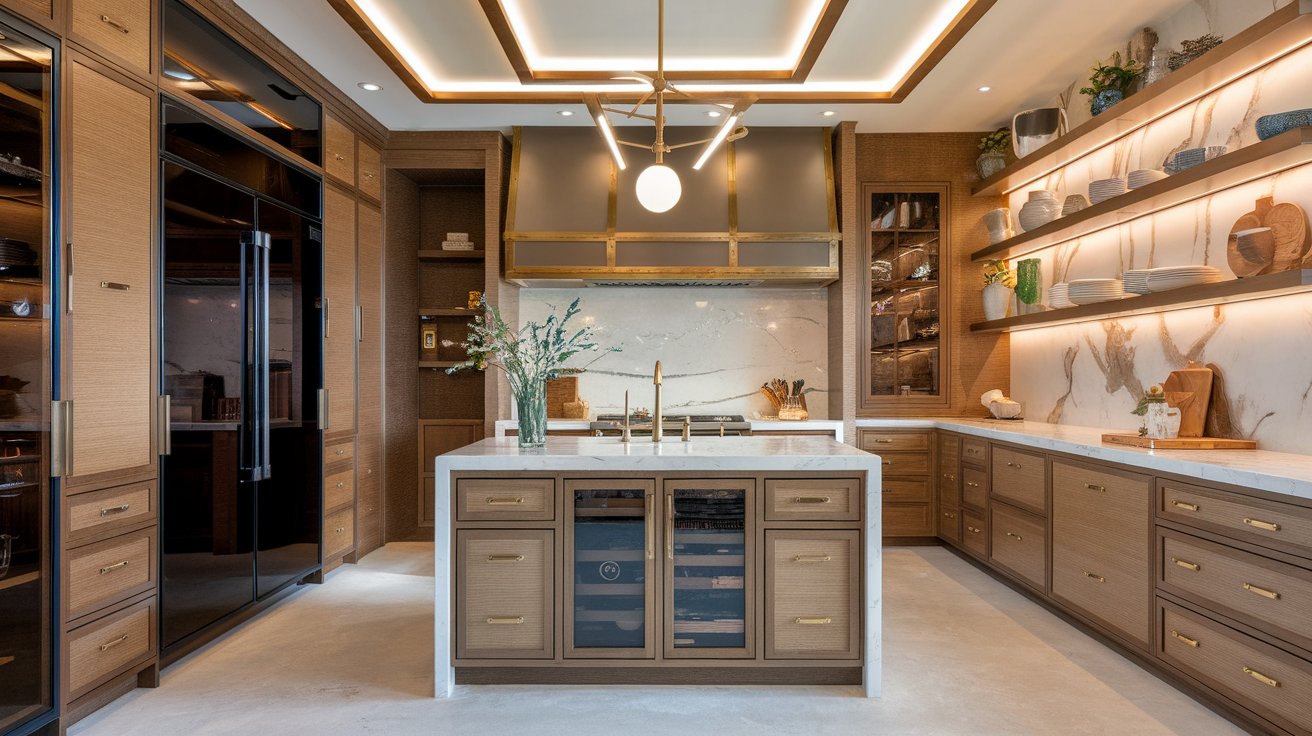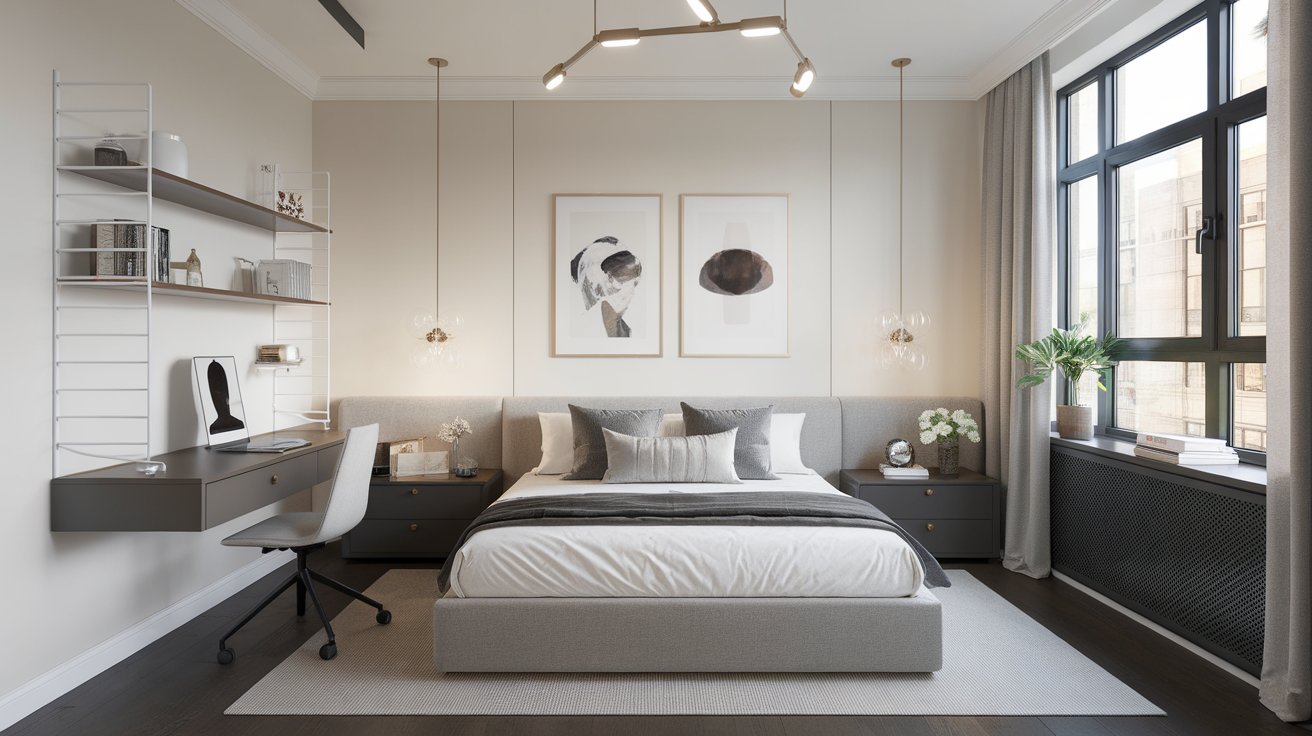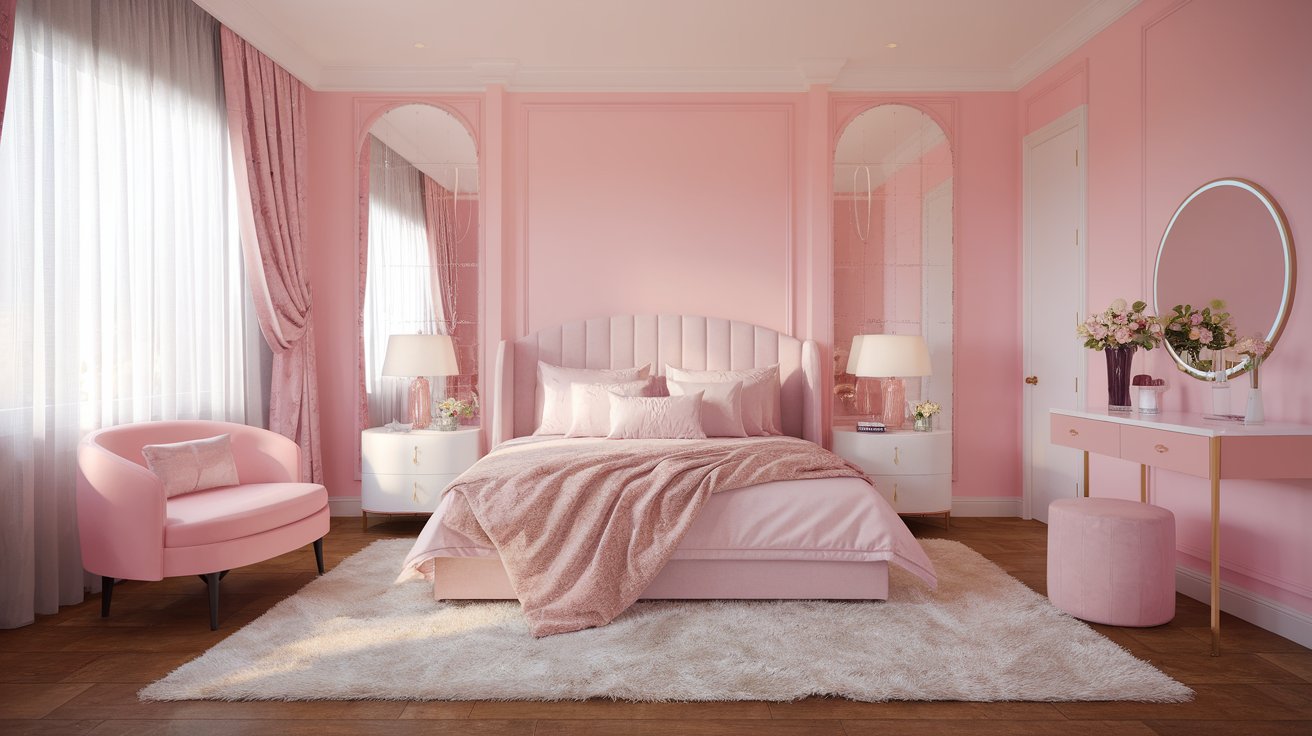Japanese Bedroom Design
When it comes to designing a bedroom that embodies tranquility, simplicity, and natural elegance, few styles can rival Japanese bedroom design. Rooted in centuries-old traditions and fused with modern minimalism, Japanese bedroom design offers a peaceful and balanced ambiance perfect for rest and relaxation. Whether you are looking to transform your room into a minimalist haven or prefer a more traditional Japanese aesthetic, this listicle will guide you through 15 essential elements to consider. So, let’s dive into the world of Japanese bedroom design, and explore how you can turn your sleeping space into a serene sanctuary.
1. Japanese Minimalist Bedroom

Japanese minimalist bedroom design is characterized by its simplicity, clean lines, and lack of clutter. The philosophy behind this design is centered around creating a space that promotes relaxation and mental clarity. By incorporating only the essentials and eliminating unnecessary items, a Japanese minimalist bedroom is both functional and visually appealing.
To achieve this look, start with a neutral color palette, such as whites, beiges, and soft grays, to create a calm atmosphere. Use natural materials like wood and bamboo for furniture and flooring to add warmth and texture. Opt for low-profile, functional furniture pieces that are free from ornate details. By focusing on functionality and simplicity, you can create a Japanese minimalist bedroom that is both serene and stylish.
2. Traditional Japanese Bedroom

A traditional Japanese bedroom typically features elements that are steeped in history and cultural significance. Tatami mats, shoji screens, and futon beds are quintessential components of this style. Tatami mats, made from rice straw and woven rush grass, provide a unique floor covering that is both comfortable and aesthetically pleasing.
Shoji screens, which are sliding panels made from translucent paper and wooden frames, offer flexible partitioning options while allowing soft, diffused light to filter through. Instead of a standard bed frame, consider using a futon mattress that can be rolled up and stored away during the day to maximize space. By incorporating these traditional elements, you can create a bedroom that is authentically Japanese and deeply rooted in cultural heritage.
3. Modern Japanese Bedroom

Modern Japanese bedroom design seamlessly blends traditional elements with contemporary aesthetics. This style keeps the minimalist approach but adds modern touches such as sleek furniture, innovative lighting, and smart storage solutions. The goal is to create a space that is both functional and aesthetically pleasing, while maintaining a sense of balance and harmony.
In a modern Japanese bedroom, you might find a platform bed with clean lines and a low profile, complemented by floating shelves and integrated storage solutions. Consider using modern materials such as glass and metal alongside natural wood to add contrast and visual interest. Incorporate advanced lighting options like LED strips or pendant lights to create ambient lighting that enhances the room’s atmosphere. This approach allows you to enjoy the best of both worlds, combining modern convenience with traditional Japanese aesthetics.
4. Japanese Interior Design

Japanese interior design is all about creating a harmonious living environment that promotes tranquility and well-being. This design philosophy extends beyond the bedroom to encompass the entire home. By utilizing natural materials, neutral color palettes, and minimalist principles, Japanese interior design fosters a sense of serenity and balance throughout the living space.
Incorporate elements like bamboo, stone, and natural fibers into your home’s design to create a cohesive look. Open floor plans and large windows that let in natural light are also key components of Japanese interior design. Additionally, indoor plants and water features can be used to enhance the sense of calm and bring a touch of nature indoors. By embracing these principles, you can create a home that is not only aesthetically pleasing but also nurturing to the soul.
5. Zen Bedroom Ideas

Zen bedroom ideas focus on creating a space that promotes peace, mindfulness, and relaxation. Inspired by Zen Buddhism, this design approach emphasizes simplicity, order, and a connection to nature. The aim is to create a harmonious environment that fosters mental clarity and inner peace.
To achieve a Zen-inspired bedroom, consider incorporating elements such as a low platform bed, natural wood furniture, and soft lighting. Opt for a neutral color palette with muted tones to create a calming atmosphere. Integrate natural elements like bamboo, river stones, and indoor plants to enhance the connection to nature. Additionally, consider incorporating a meditation corner with a comfortable floor cushion and minimalistic decor to promote mindfulness and relaxation. By adopting these Zen bedroom ideas, you can create a sanctuary that nourishes the mind and soul.
6. Japanese Furniture

When it comes to Japanese bedroom design, the furniture plays a crucial role in creating the desired aesthetic. Japanese furniture is characterized by its simplicity, functionality, and use of natural materials. Pieces are often low to the ground, promoting a sense of intimacy and connection to the earth.
Consider incorporating traditional Japanese furniture such as a futon bed, which can be rolled up and stored away during the day. Tatami mats can be used as a flooring option, providing a comfortable and authentic touch. For storage, opt for tansu chests, which are wooden storage units with a distinctive ladder-like design. Additionally, low wooden tables and minimalist shelving units can be used to complete the look. By selecting Japanese furniture, you can create a bedroom that is both functional and aesthetically pleasing.
7. Japanese Bedroom Layout

The layout of a Japanese bedroom is designed to maximize space and promote a sense of harmony. The placement of furniture and decor is carefully considered to create a balanced and uncluttered environment.
When planning your Japanese bedroom layout, start by focusing on the bed as the central element. A low platform bed or futon mattress should be placed in a position that allows for easy movement around the room. Consider incorporating shoji screens or sliding doors to create flexible partitioning options. Ensure that there is ample space for tatami mats, which can be used as both flooring and seating areas. Additionally, incorporate storage solutions such as built-in closets or tansu chests to keep the space organized and free from clutter. By carefully planning your Japanese bedroom layout, you can create a functional and harmonious living space.
8. Japanese Style Room
 A Japanese style room is characterized by its simplicity, natural materials, and attention to detail. This design approach extends beyond the bedroom to encompass the entire living space. By incorporating traditional elements and minimalist principles, you can create a cohesive and harmonious home.
A Japanese style room is characterized by its simplicity, natural materials, and attention to detail. This design approach extends beyond the bedroom to encompass the entire living space. By incorporating traditional elements and minimalist principles, you can create a cohesive and harmonious home.
To create a Japanese style room, start with a neutral color palette and natural materials such as wood, bamboo, and stone. Incorporate traditional elements like tatami mats, shoji screens, and futon beds to create an authentic look. Opt for low-profile, functional furniture that promotes a sense of intimacy and connection to the earth. Additionally, consider using indoor plants and water features to enhance the connection to nature. By embracing these principles, you can create a tranquil and balanced living environment that is both aesthetically pleasing and nurturing to the soul.
9. Japanese Home Design

Japanese home design is rooted in the principles of simplicity, minimalism, and a strong connection to nature. This design philosophy extends beyond the aesthetics to encompass the entire living environment, promoting a sense of tranquility and well-being.
When designing a Japanese home, start with an open floor plan that allows for natural light to flow throughout the space. Use natural materials such as wood, bamboo, and stone to create a warm and inviting atmosphere. Incorporate traditional elements like tatami mats, shoji screens, and futon beds to add authenticity and cultural significance. Additionally, consider using indoor plants and water features to enhance the sense of calm and bring a touch of nature indoors. By embracing these principles, you can create a home that is not only beautiful but also nurturing to the soul.
10. Japanese Bedding

Japanese bedding is an essential component of Japanese bedroom design, offering both comfort and simplicity. Traditional Japanese bedding typically consists of a futon mattress, which can be rolled up and stored away during the day. This not only saves space but also allows for a flexible and multi-functional living environment.
To create an authentic Japanese bedding setup, start with a high-quality futon mattress made from natural materials such as cotton or wool. Opt for a low-profile bed frame or place the futon directly on tatami mats for a traditional look. Use simple, high-quality bedding in neutral colors to maintain a calm and serene atmosphere. Additionally, consider incorporating a kakebuton (thick duvet) and a makura (buckwheat pillow) for added comfort and authenticity. By selecting traditional Japanese bedding, you can create a sleeping environment that is both cozy and culturally rich.
11. Japanese Zen Bedroom

A Japanese Zen bedroom is designed to promote peace, mindfulness, and relaxation. Inspired by Zen Buddhism, this design approach emphasizes simplicity, order, and a connection to nature. The aim is to create a harmonious environment that fosters mental clarity and inner peace.
To achieve a Japanese Zen bedroom, consider incorporating elements such as a low platform bed, natural wood furniture, and soft lighting. Opt for a neutral color palette with muted tones to create a calming atmosphere. Integrate natural elements like bamboo, river stones, and indoor plants to enhance the connection to nature. Additionally, consider incorporating a meditation corner with a comfortable floor cushion and minimalistic decor to promote mindfulness and relaxation. By adopting these Zen bedroom ideas, you can create a sanctuary that nourishes the mind and soul.
12. Zen-Inspired Bedroom

A Zen-inspired bedroom draws from the principles of Zen Buddhism to create a space that is serene, balanced, and free from clutter. This design approach emphasizes simplicity, natural materials, and a strong connection to nature.
To create a Zen-inspired bedroom, start with a neutral color palette that includes soft grays, beiges, and whites. Incorporate natural materials such as wood, bamboo, and stone to add warmth and texture. Opt for low-profile furniture that promotes a sense of intimacy and connection to the earth. Use soft, ambient lighting to create a calming atmosphere. Additionally, consider incorporating natural elements like indoor plants, river stones, and water features to enhance the connection to nature. By embracing these principles, you can create a Zen-inspired bedroom that promotes peace and tranquility.
13. Traditional Japanese Furnishings

Traditional Japanese furnishings are characterized by their simplicity, functionality, and use of natural materials. These pieces are often low to the ground, promoting a sense of intimacy and connection to the earth.
Consider incorporating traditional Japanese furnishings such as a futon bed, which can be rolled up and stored away during the day. Tatami mats can be used as a flooring option, providing a comfortable and authentic touch. For storage, opt for tansu chests, which are wooden storage units with a distinctive ladder-like design. Additionally, low wooden tables and minimalist shelving units can be used to complete the look. By selecting traditional Japanese furnishings, you can create a bedroom that is both functional and aesthetically pleasing.
14. Japanese-Inspired Decor

Japanese-inspired decor is all about creating a harmonious and balanced living environment. This design approach emphasizes simplicity, natural materials, and a strong connection to nature.
To create Japanese-inspired decor, start with a neutral color palette and natural materials such as wood, bamboo, and stone. Incorporate traditional elements like tatami mats, shoji screens, and futon beds to create an authentic look. Opt for low-profile, functional furniture that promotes a sense of intimacy and connection to the earth. Use indoor plants and water features to enhance the connection to nature. Additionally, consider incorporating minimalistic artwork and decor pieces that reflect the principles of Japanese design. By embracing these principles, you can create a living environment that is both aesthetically pleasing and nurturing to the soul.
15. Oriental Bedroom Design

Oriental bedroom design encompasses a broad range of styles, with Japanese bedroom design being one of the most prominent. This design approach emphasizes simplicity, natural materials, and a strong connection to nature.
To create an Oriental bedroom design, start with a neutral color palette that includes soft grays, beiges, and whites. Incorporate natural materials such as wood, bamboo, and stone to add warmth and texture. Opt for low-profile furniture that promotes a sense of intimacy and connection to the earth. Use soft, ambient lighting to create a calming atmosphere. Additionally, consider incorporating natural elements like indoor plants, river stones, and water features to enhance the connection to nature. By embracing these principles, you can create an Oriental bedroom design that promotes peace and tranquility.
Conclusion of Japanese Bedroom Design
Designing a Japanese bedroom is more than just an aesthetic choice; it’s about creating a harmonious space that promotes tranquility and well-being. Whether you prefer a minimalist approach, a traditional setting, or a modern fusion, there are endless ways to incorporate Japanese elements into your bedroom design. By focusing on simplicity, natural materials, and a strong connection to nature, you can create a serene sanctuary perfect for rest and relaxation. Explore these 15 essential elements and let your Japanese bedroom design journey begin.

